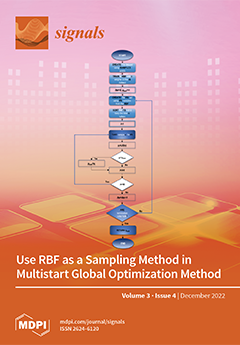Open AccessArticle
Grammatical Evolution-Based Feature Extraction for Hemiplegia Type Detection
by
Vasileios Christou, Ioannis Tsoulos, Alexandros Arjmand, Dimitrios Dimopoulos, Dimitrios Varvarousis, Alexandros T. Tzallas, Christos Gogos, Markos G. Tsipouras, Evripidis Glavas, Avraam Ploumis and Nikolaos Giannakeas
Cited by 3 | Viewed by 1421
Abstract
Hemiplegia is a condition caused by brain injury and affects a significant percentage of the population. The effect of patients suffering from this condition is a varying degree of weakness, spasticity, and motor impairment to the left or right side of the body.
[...] Read more.
Hemiplegia is a condition caused by brain injury and affects a significant percentage of the population. The effect of patients suffering from this condition is a varying degree of weakness, spasticity, and motor impairment to the left or right side of the body. This paper proposes an automatic feature selection and construction method based on grammatical evolution (GE) for radial basis function (RBF) networks that can classify the hemiplegia type between patients and healthy individuals. The proposed algorithm is tested in a dataset containing entries from the accelerometer sensors of the RehaGait mobile gait analysis system, which are placed in various patients’ body parts. The collected data were split into 2-second windows and underwent a manual pre-processing and feature extraction stage. Then, the extracted data are presented as input to the proposed GE-based method to create new, more efficient features, which are then introduced as input to an RBF network. The paper’s experimental part involved testing the proposed method with four classification methods: RBF network, multi-layer perceptron (MLP) trained with the Broyden–Fletcher–Goldfarb–Shanno (BFGS) training algorithm, support vector machine (SVM), and a GE-based parallel tool for data classification (GenClass). The test results revealed that the proposed solution had the highest classification accuracy (90.07%) compared to the other four methods.
Full article
►▼
Show Figures





